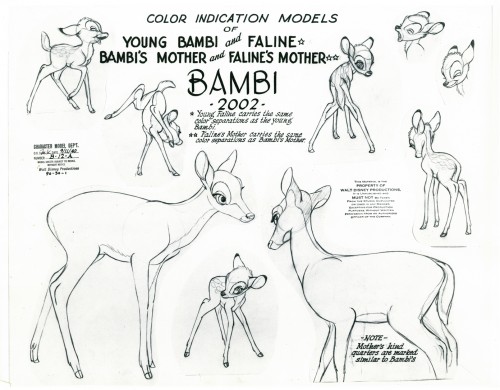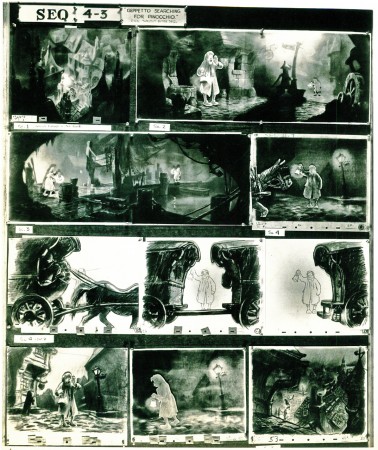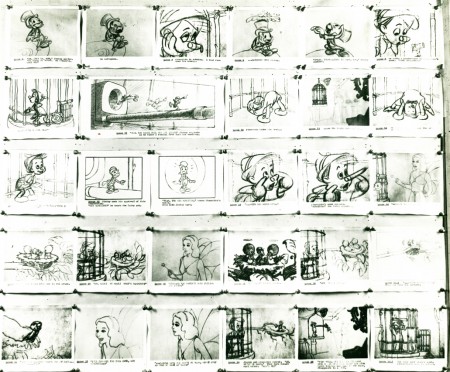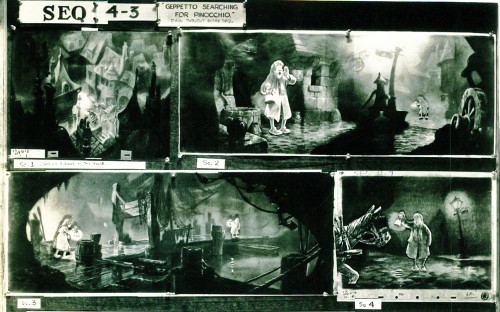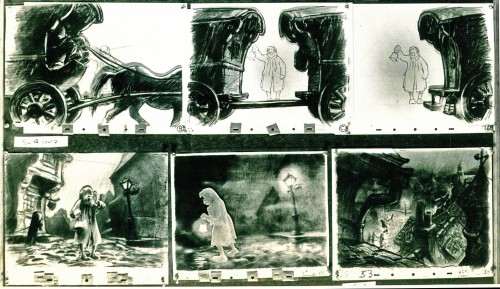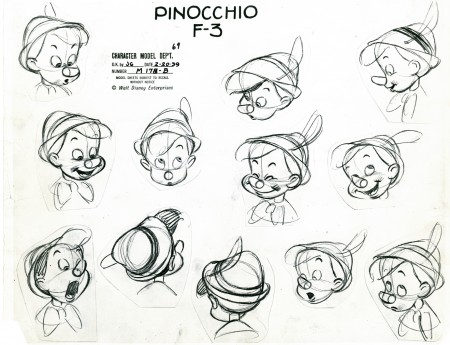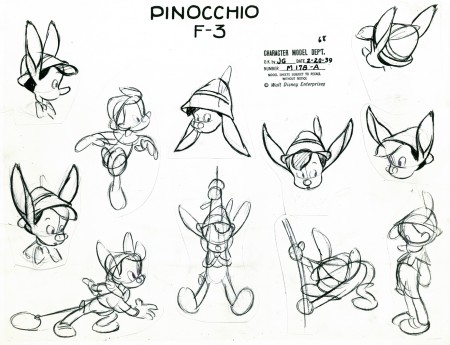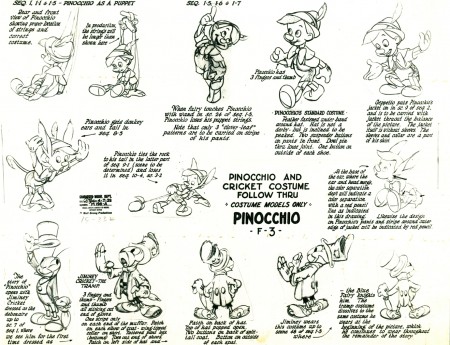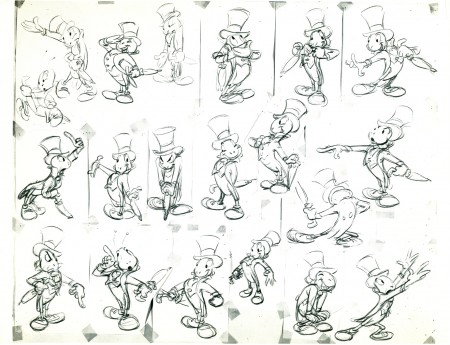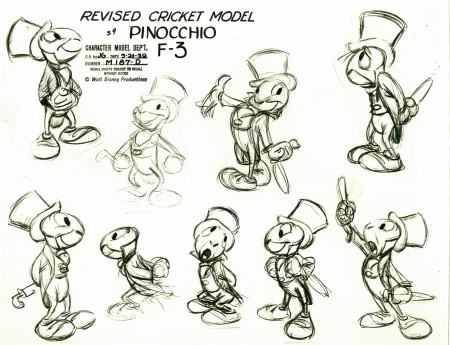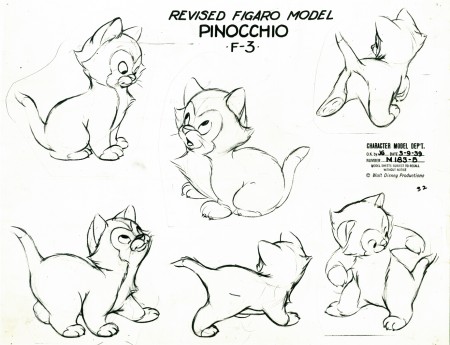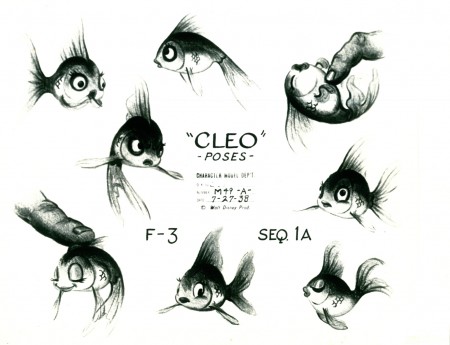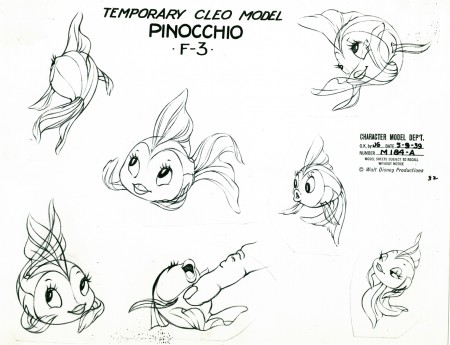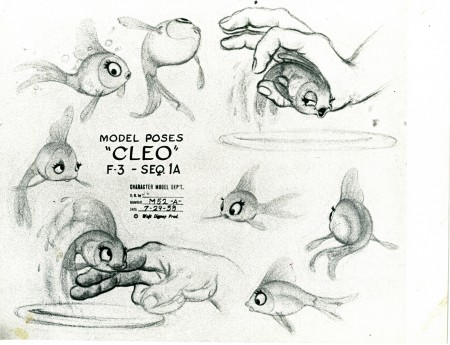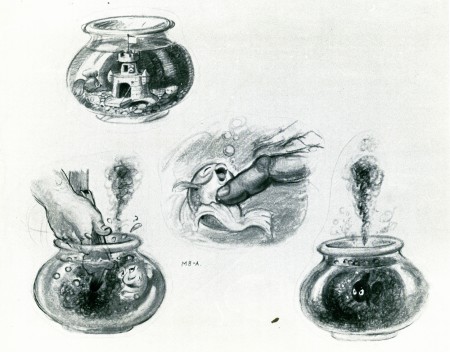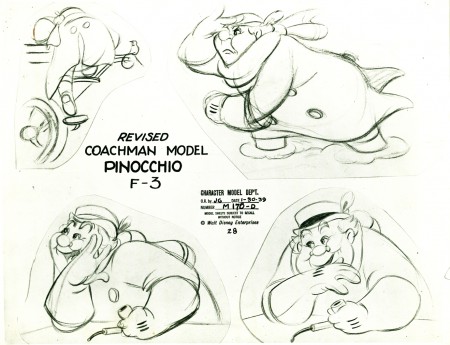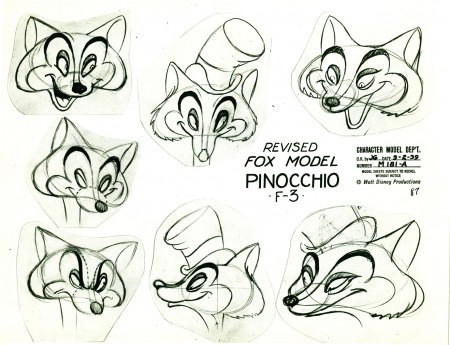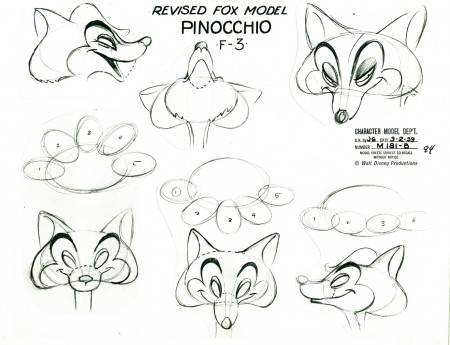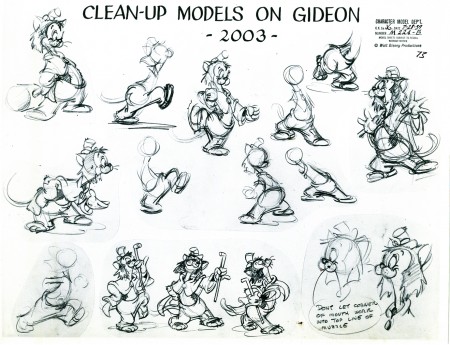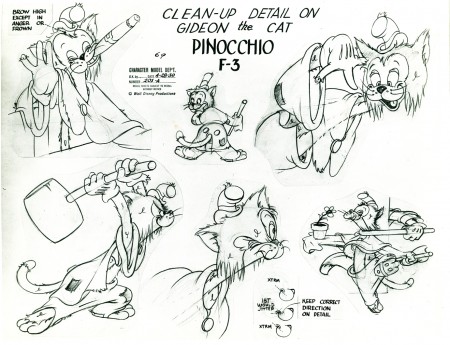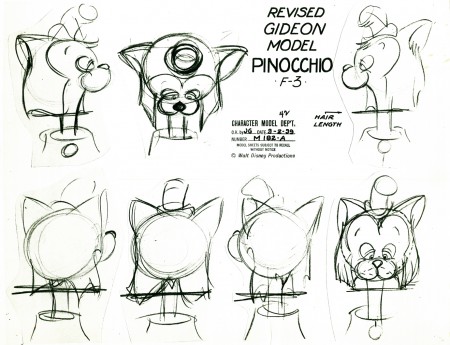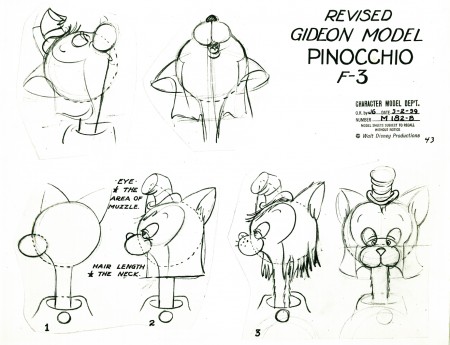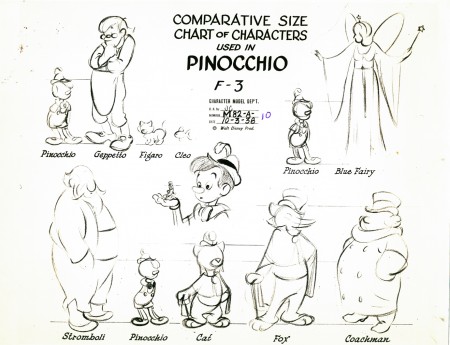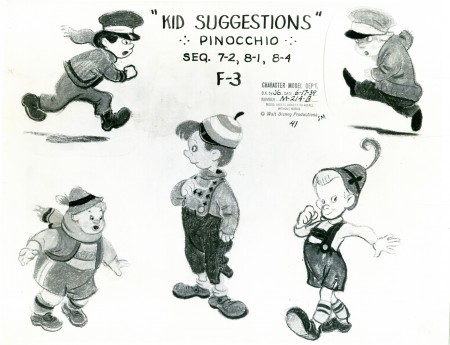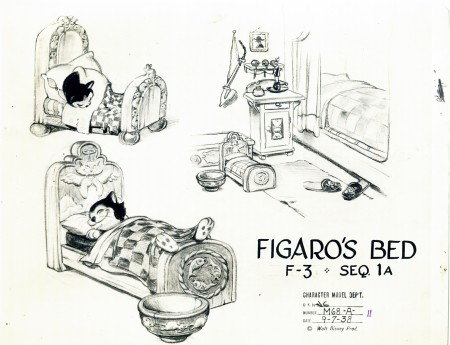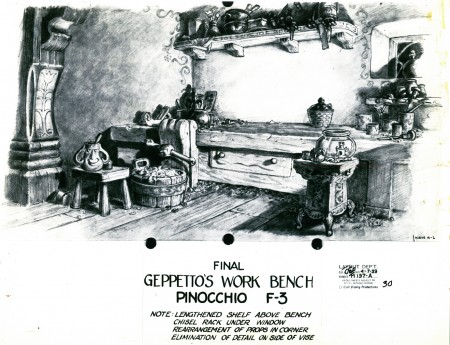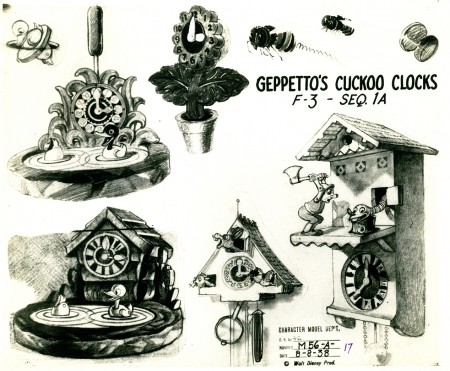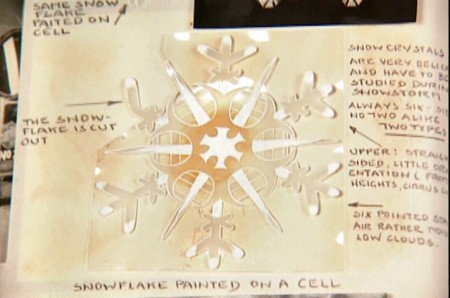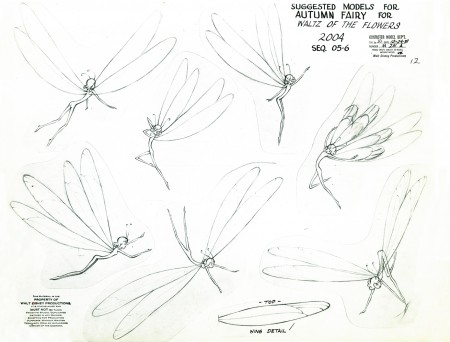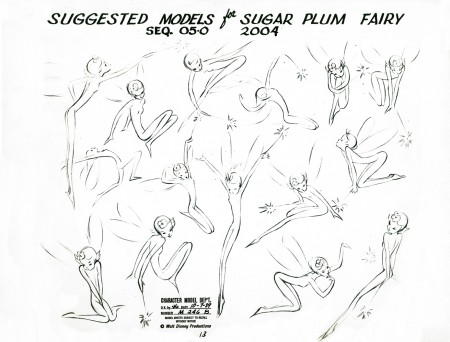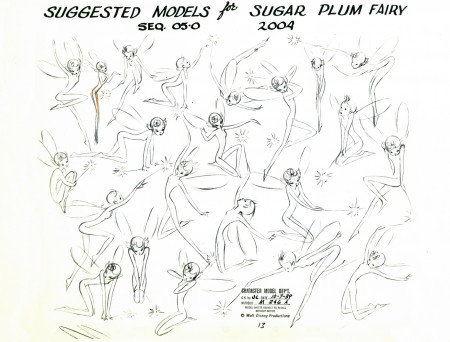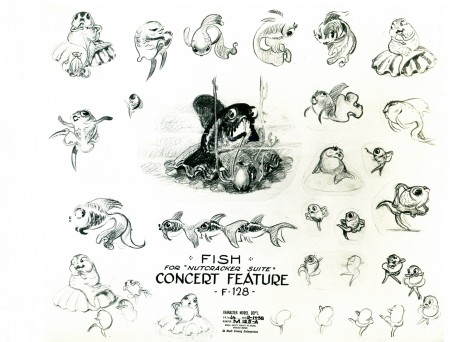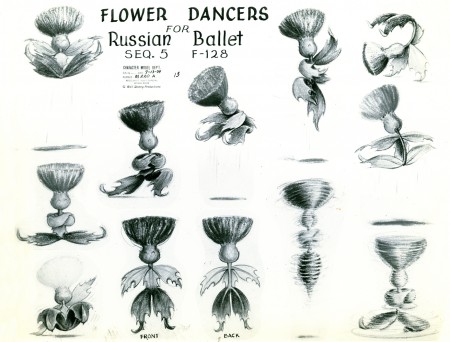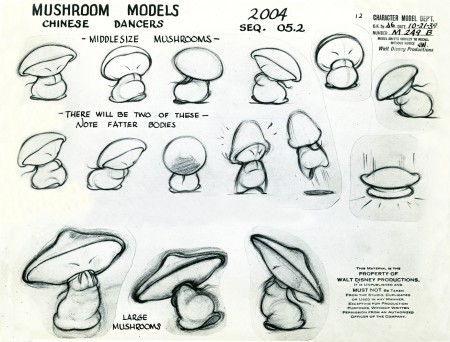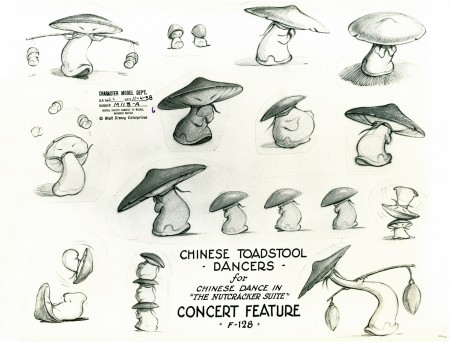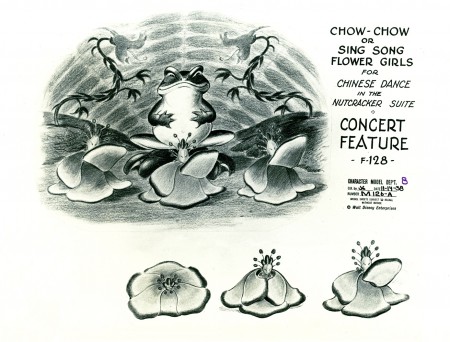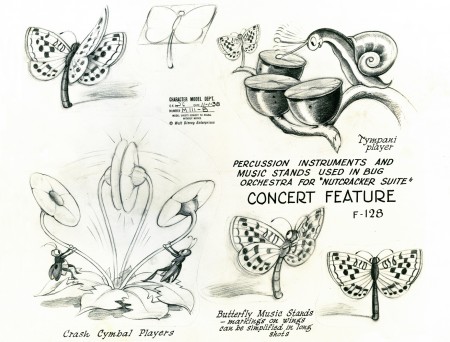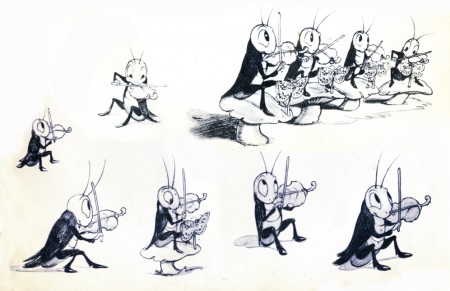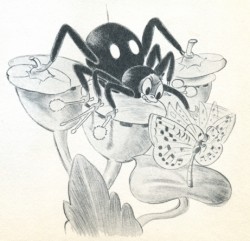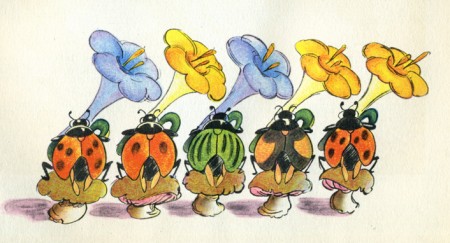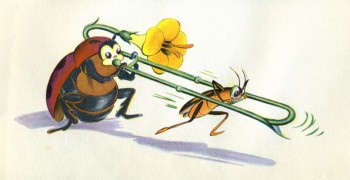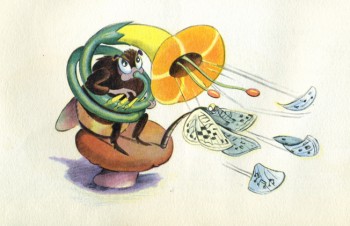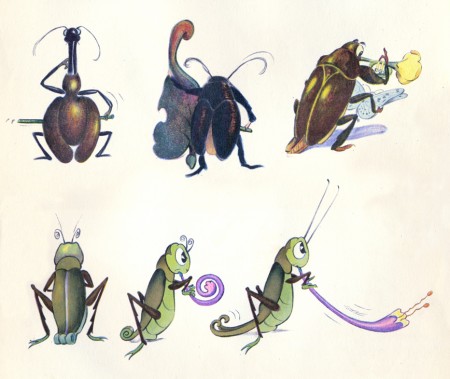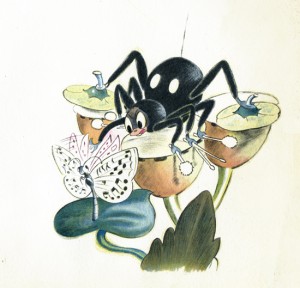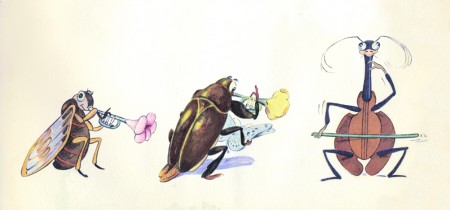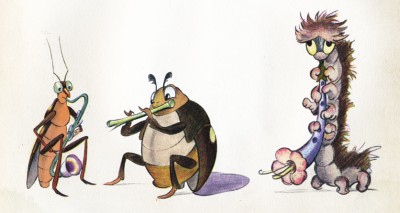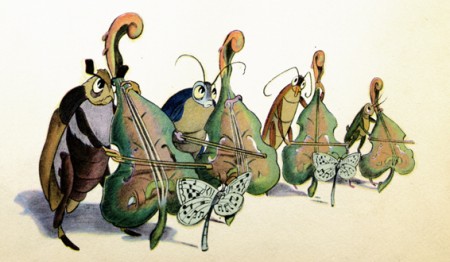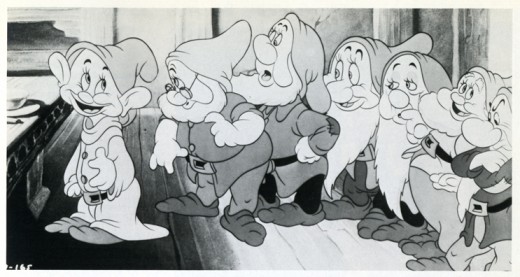Category ArchiveDisney
Animation &Disney 12 Oct 2009 07:31 am
Frank Thomas’ Jungle Book 2
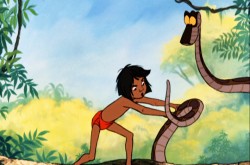 – We continue with Frank Thomas’ scene from the Jungle Book.
– We continue with Frank Thomas’ scene from the Jungle Book.
His animation is certainly a piece with the work he did on Sword in the Stone. I assume he did a large part of this show, as
he did with S in the St. These were very productive and fruitful years for Frank. It’s a shame the films didn’t have more depth.
This part of the scene starts on ones and soon goes to twos. Watching the QT movie, it all moves so fluidly that it all becomes solidly one.
To view the first Part of this scene go here.
I start off this scene with the last drawing from Part 1.
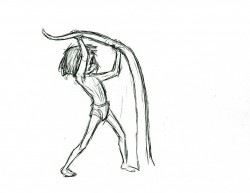 27
27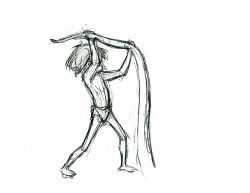 29
29(Click any image to enlarge to see the full animation page.
The QT movie below includes all drawings of this scene.
Mowgli & KaaClick left side of the black bar to play.
Right side to watch single frame.
The remainder of this scene will be posted next Monday, and the full QT will be made.
Animation Artifacts &Bill Peckmann &Books &Disney &walk cycle 08 Oct 2009 08:28 am
How To Draw Chip & Dale
- In the past I’ve posted the series of booklets that Disney released via the Art Corner at Disneyland. How To Draw Mickey, Donald, Goofy and Pluto have been posted. The only one left is How To Draw Chip & Dale. Thanks to Bill Peckmann, I can post this last booklet.
The past booklets I posted were actually rereleased publications that were stapled together and handed out at the Lincoln Center celebration for all things Disney back in 1973.
This Chip & Dale book, however, is the real thing. It was an original published in 1955.
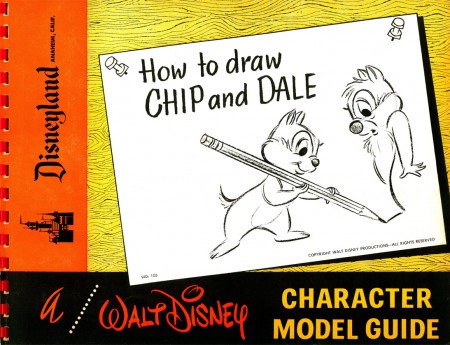 1
1(Click any image to enlarge.)
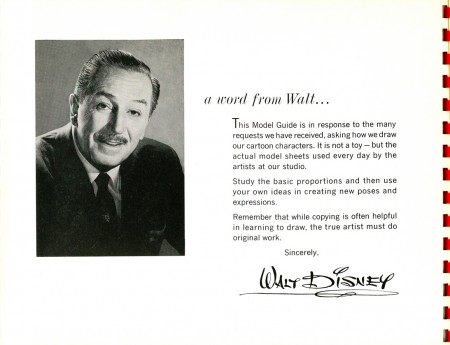 2
2
This is the inner cover which iss a thin cardboard.
as opposed to the yellow pages of paper.
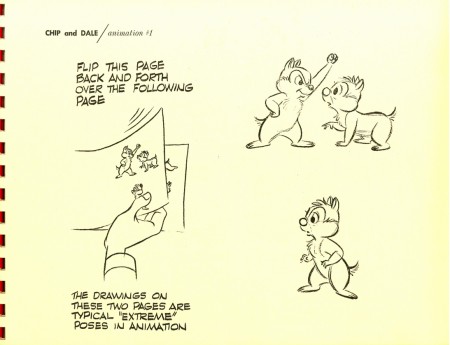 15
15
The directions tell you to flip the pages to see the movement.
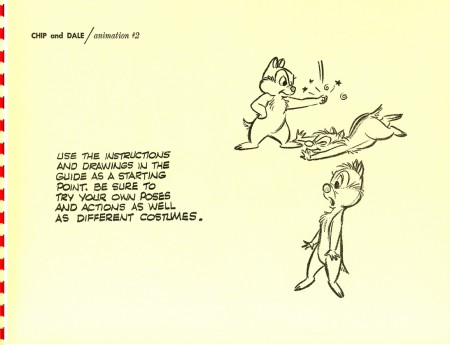 16
16
However this page is printed on the back of page 15,
and it’s impossible to flip. It doesn’t matter since the two drawings
aren’t registered to each other and flipping doesn’t work.
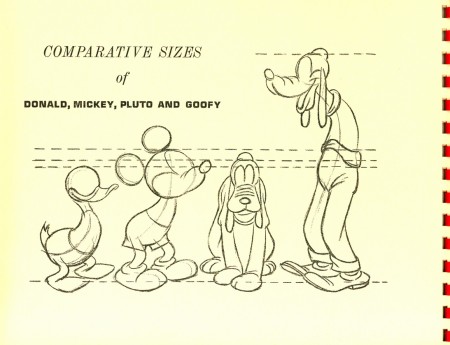 18
18
This page appears in all of the booklets.
Here’s a QT of the walk cycle on pg 12.
Chip cycle on threes.
Click left side of the black bar to play.
Right side to watch single frame.
Go here to see the lecture series posts:
Mickey / Donald / Goofy / Pluto
Here to see How To Draw Mickey.
Here to see How To Draw Donald.
Here to see How To Draw Pluto.
Here to see How To Draw Goofy (Jenny Lerew‘s Blackwing Diaries.)
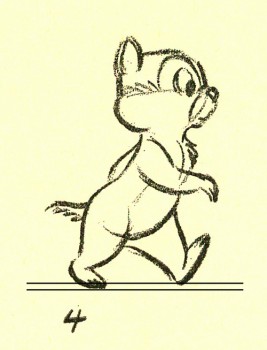
I once pointed out that a good walk should be drawn
with the two feet a distance apart from each other.
This creates a sense of depth in that walk. You might look
for this when you see other walks on line. You’ll be
surprised at how many professionals do it and how many
beginners don’t. Lately the latter is beating the former.
Animation &Animation Artifacts &Disney 05 Oct 2009 08:29 am
Frank Thomas’ Jungle Book 1
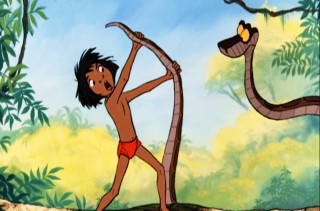 John Canemaker has loaned me a scene of drawings by Frank Thomas from the Jungle Book. Actually, they’re not the actual drawings but s/s xeroxed copies.
John Canemaker has loaned me a scene of drawings by Frank Thomas from the Jungle Book. Actually, they’re not the actual drawings but s/s xeroxed copies.
75 drawings in all, I’m going to post this scene between Mowgli and Kaa, the snake, however, I’ll have to break it up into a couple of posts. Here’s the first part, and I’ll follow up next Monday with more. Eventually we’ll post them all and have a QT movie of the full scene.
I’m not a fan of this film, however, I can’t deny the animation is mostly excellent and sometimes brilliant. Needless to say, Frank Thomas delivered some beautiful work. This scene is a typical example of his work even though it’s not one that calls attention to itself.
In studying the scene you might pay attention to what is on one’s (1-12) as opposed to what is on two’s (13-27) and figure out why.
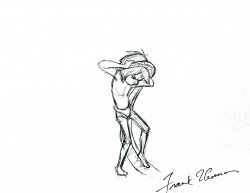 1
1 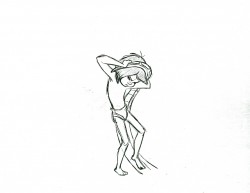 2
2(Click any image to enlarge to full animation paper size.)
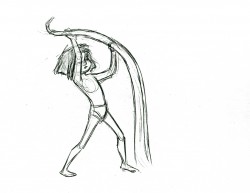 25
25 27
27
More to follow next Monday.
Here’s the QT of all the drawings from this scene.
Mowgli & Kaa
Click left side of the black bar to play.
Right side to watch single frame.
Animation &Bill Peckmann &Disney &Models &Story & Storyboards 28 Sep 2009 07:36 am
Bambi Board 2
- The cache of stats that Bill Peckmann recently sent me on loan includes several photo pages of storyboard from the Bambi Twitterpated sequence. I’m not much of a fan of this sequence, but looking at these beautiful storyboard drawings makes me realize how charming it is in its original state. The cute/cartoony movements came from the animators and directors. Perhaps the film needed this funny, broad approach, but I have a feeling there are other ways it could have been tackled that might have let it feel more connected to the whole.
As with past board postings, I’ve cut them up into rows so that I can post them at a higher res for better viewing. First here are the three pages as they stand:
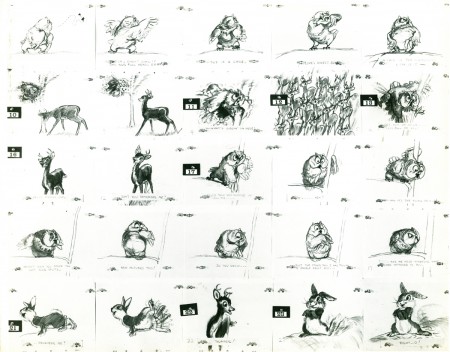 1
1(Click any image to enlarge.)
Now here they are again broken into individual rows:
 1a
1a
Here are some model sheets which relate to this sequence:
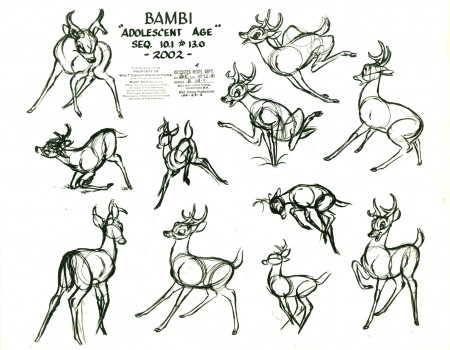 1
1
Once again, many thanks to Bill Peckmann for the loan of this marvelous material. It’s truly appreciated, and it’s fun to share.
It’s amazing to think how Walt Disney pushed all this great art forward. This film actually moved the “Art” side of animation forward with the majestic backgrounds, realistically designed animation and bold storytelling approach. There’s no possibility that something as rich as this film could be done today.
Animation Artifacts &Bill Peckmann &Disney &Models &Story & Storyboards 21 Sep 2009 07:34 am
Bambi Board 1
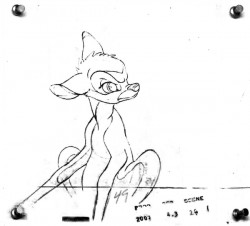 - Straight from the collection and the kindness of Bill Peckmann comes these three photo captures of a presentation board from Bambi.
- Straight from the collection and the kindness of Bill Peckmann comes these three photo captures of a presentation board from Bambi.
One of the photos is missing, consequently on the first picture every other group of four panels is gone. If you look at photos #3 & #4, you’ll see that they should be read across. The top 4 images from #3 should be followed by the top 4 images from #4; then onto the second row.
The same should be true of photos #1 & #2, but #2 is missing. What’s here is so good, though, that I’m posting it just the same.
As with past boards, I post the boards/photos as they came to me. Then I break them up (putting them into proper order) a row at a time. This is to be able to offer you the highest res copy of all.
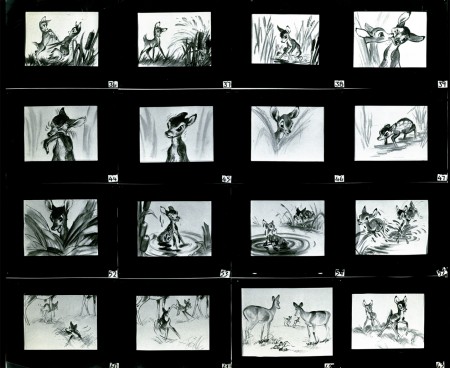 1
1(Click any image to enlarge.)
And now the breakdown of these three boards:
missing four panels
missing four panels
missing four panels
Photo 3 & 4 combined
Here are some model sheets that relate to this material:
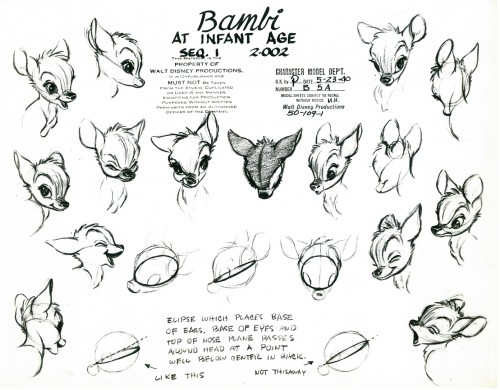 1
1
If you’re interested you should check out past posts on Rico LeBrun’s animal anatomy lessons: Part 1, Part 2, Part 3
There are another three pages of storyboard that I’ll post soon. Again, many thanks to Bill Peckmann.
Animation Artifacts &Bill Peckmann &Disney &Story & Storyboards 16 Sep 2009 07:31 am
Pinocchio Bd
- Here are a couple of Pinocchio storyboard sequences from the collection of Bill Peckmann. The boards are stated in a relatively small format. I’ve scanned them in at a high res and am placing them here in smaller sections so that they’re legible – at least in the blown-up versions.
Pinocchio is duped by some cads. These are the three full sized boards which take us through the nose-grows sequence (minus Stromboli).
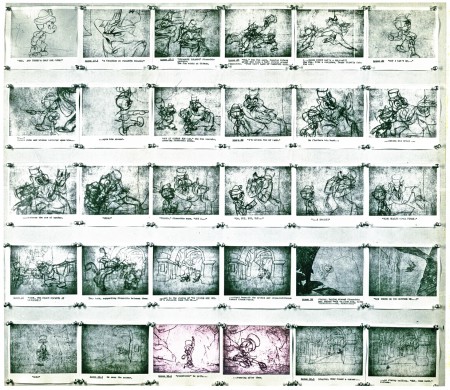
(Click any image to enlarge.)
Now here are those same three boards broken into sections.
 11a
11a
Of course, if we’re talking about studying Pinoochio, I have to direct you back
to the drafts on Hans Perk‘s great site and
the mosaics on Mark Mayerson‘s equally excellent blog.
Animation Artifacts &Bill Peckmann &Disney &Models 14 Sep 2009 07:27 am
Pinocchio Model Monday
- As I did with the past few Mondays, I’m posting some Disney model sheets on loan to me from the generous Bill Peckmann. Here we have Pinocchio. I’ve seen about half of these models before – usually in much worse states – though some of them are very new to me. (Check out #5, #11 & #20.) All are photostats and in fine shape. This film is an inspiration to any animator, so they’re fun to post.
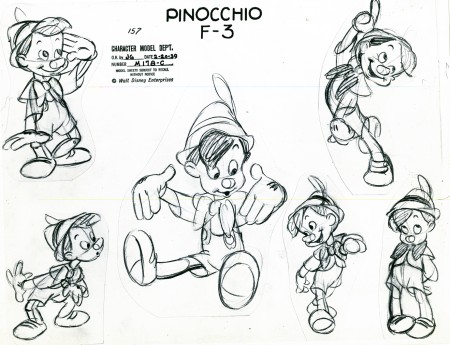 1
1(Click any image to enlarge.)
What! No Gepetto?
I do have this badly damaged 16fld cel. After all, he has to be represented. And when would I get a chance to show it off?
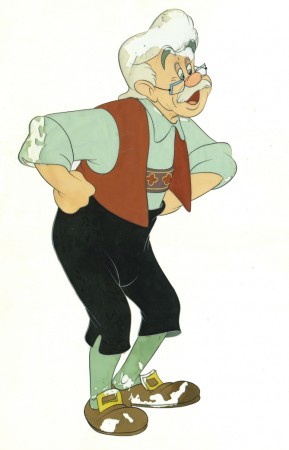
Animation &Disney &Frame Grabs 09 Sep 2009 07:43 am
Fantasia FX
- Herman Schultheis was an effects animator who worked on Fantasia. He kept a tight record of the effects they were creating from 1938-1941 and a photo display of how they were done. Schultheis disappeared in 1954 while trekking through Central America, and the notebook was forgotten until his wife’s death in the early 1990s, after which it was discovered by Howard Lowery behind the couple’s bedroom wall.
The book will be on display at the The Walt Disney Family Museum when it opens in October. It’s also been digitized so that visitors will be able to go through the book, enlarge photos and view it page by page.
Prior to the discovery of the book we were able to figure out a few of the effects. One Disneyland show, in fact, recreated the bubbling lava scene from the Rite of Spring sequence.
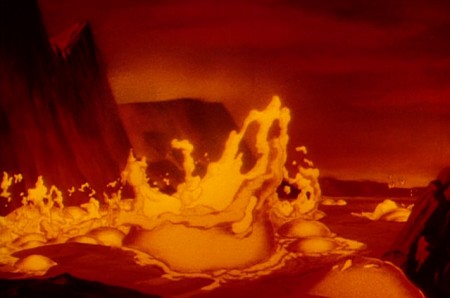
(Click any image to enlarge.)
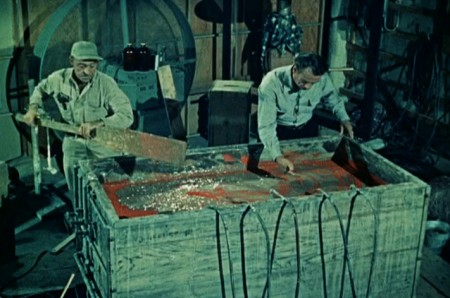
Josh Meador recreated the slow motion shoot of the
boiling concoction used to develop the bubbling lava.
However, the book revealed so much more than we’d understood
about how the superb effects had been crafted.
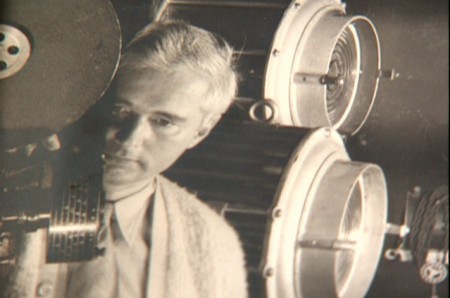
Herman Schultheis created the book of charts and photos
which gives us a link to the many creative effects in the film.
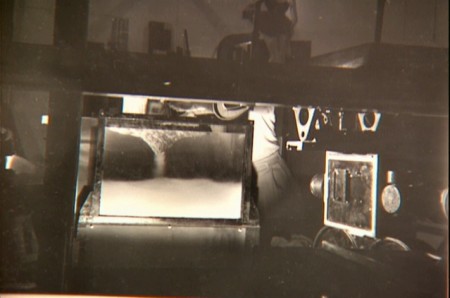
Using a vat of water, they were able to
drop ink into the liquid and film it in slow motion.
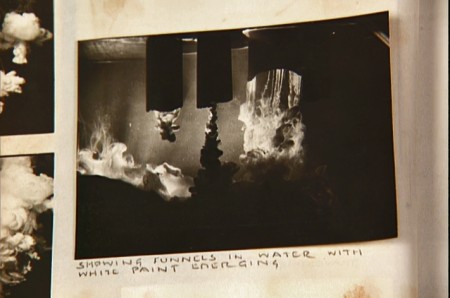
A photo of the ink spilling into the water behind built-in mattes.
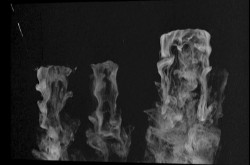
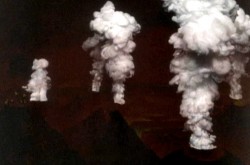
Taking the shot of the ink, they then turned it upside-down.
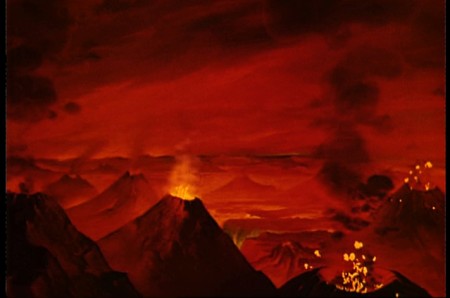
They then superimpose the “smoke” (or ink) over the volcanoes.
This same effect was used in Close Encounters of the Third Kind
to create clouds when the alien ships were moving in on the
farmhouse where the boy and mother lived.
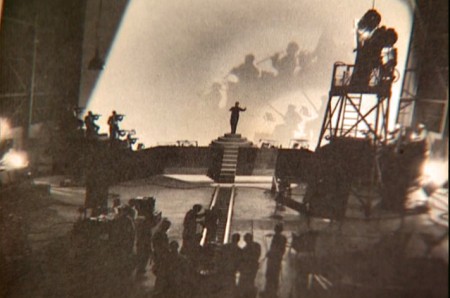
The orchestra was shot on a set with strong, planned shadows.
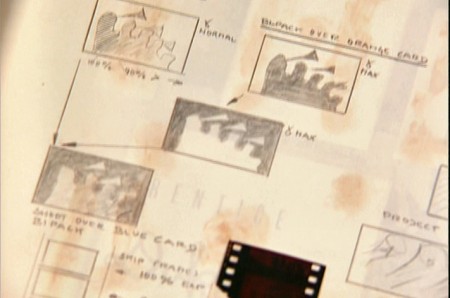
All these shots were orchestrated and planned for color effects.
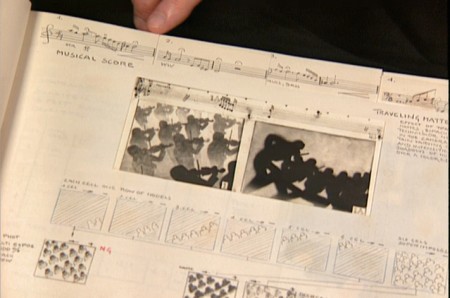
They were also catalogued by Schultheis who kept close
track of the music, as well, in his book. You can see a
page by page breakdown of the score at the top of the page.
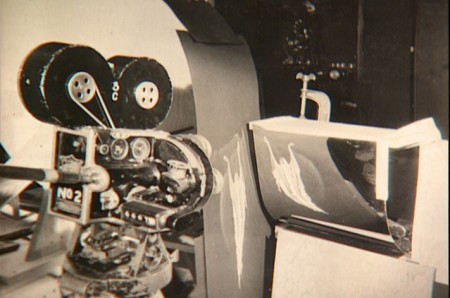
You can see the highly polished sheet of metal (middle left) which reflected
and distorted the animation drawings. This is what the camera photographed
in some of the scenes during the Night on Bald Mountain sequence.
It was also used for the fire in Bambi.
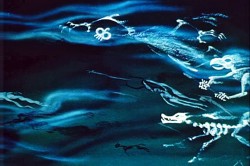 1
1 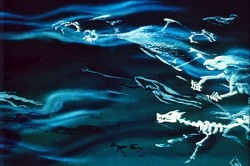 2
2
This scene’s ghosts were shot using that distorted metal reflection.
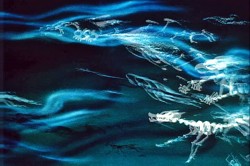 2a
2a 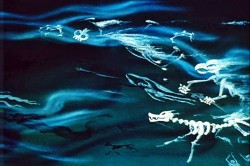 3
3
The ghosts also used a form of cross dissolve.
John Hubley explained to me how that was done.
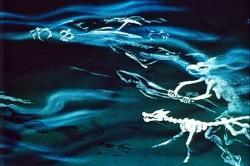 4
4 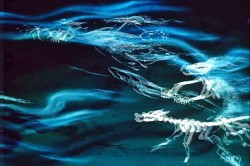 4a
4a
They shot the entire scene at 50% exposure. Then they went back
to the beginning and reshot the entire scene again at 50% exposure.
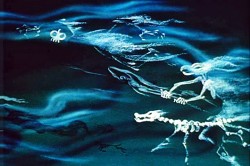 5
5 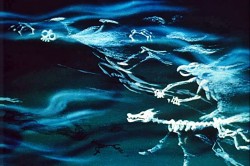 6
6
However on the second shoot, they started by shooting a black frame.
This made #1 fall where #2 should have been, #2 for #3 etc.
This creates a ghostly dissolve effect.
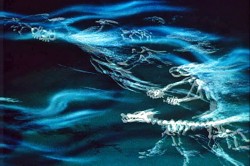 6a
6a 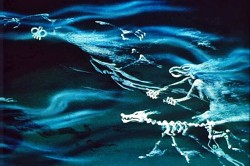 7
7
All of the drawings labelled with an “a” are the double exposures:
2a, 4a, 6a
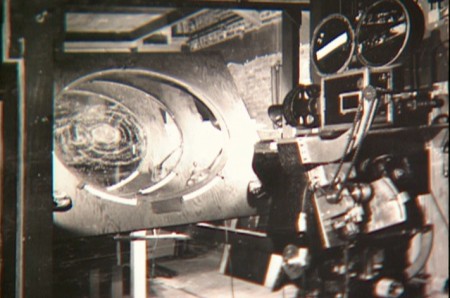
A make-shift circular multiplane camera was built.
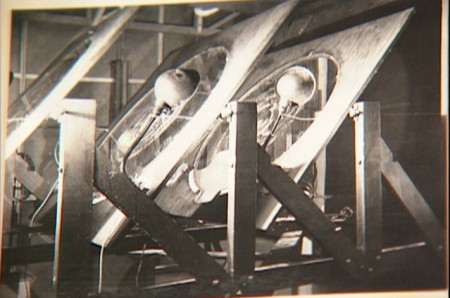
Created out of wooden sheets with holes cut out,
placed so they could shift angles, they were designed to
allow revolving artwork in the circular cut outs.
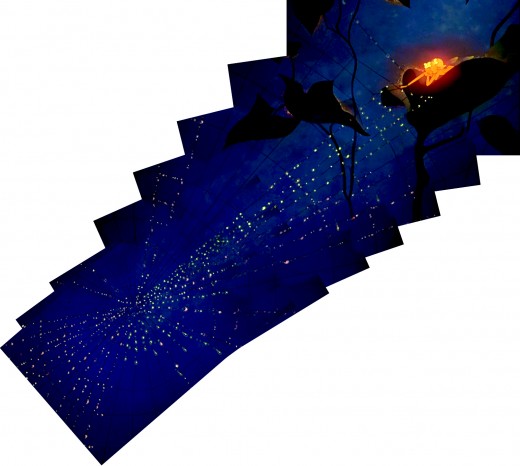
This allowed shooting scenes such as this shot of
a spider web as the camera turned around it while
dew glistened off it.
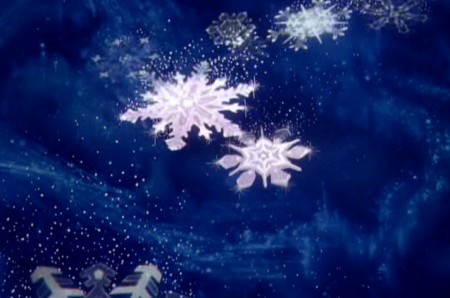
The spinning snowflakes are well explained in Schultheis’ book.
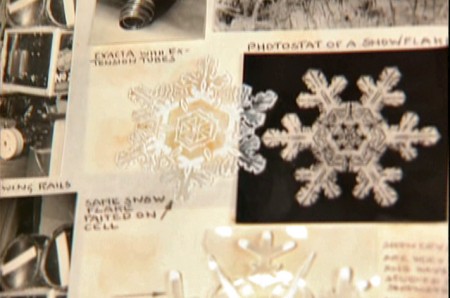
The snowflakes had a detailed construction.
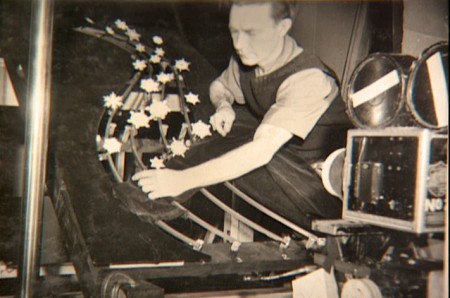
The path of action was intricately defined.
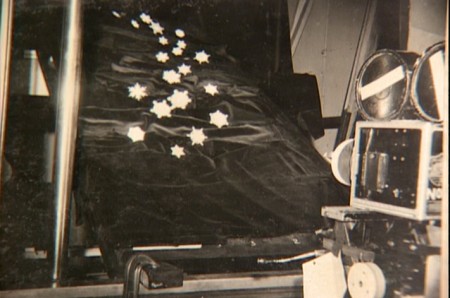
The snowflakes were shot against a sheet of black velvet
hiding the wire guides.
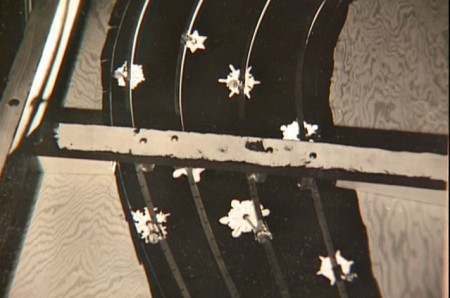
They were shot in tight closeup. From below you can
see the turning gears they were constructed on.
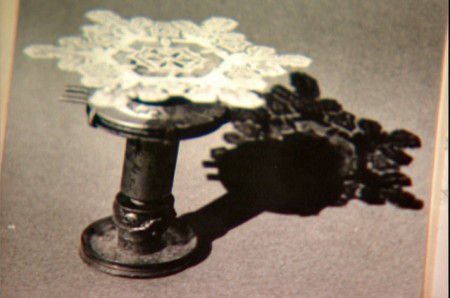
Each snowflake was built on a turning gear
so that they could revolve in their path of action.
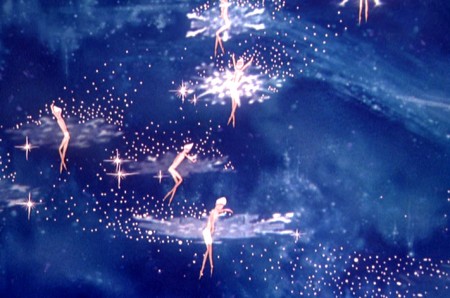
Burn these snowflakes over the multiplane background
and add matching 2D animated fairies within each snowflake,
and you have the finished scene.
Animation Artifacts &Bill Peckmann &Books &Disney &Models 08 Sep 2009 07:35 am
Nutcracker Models
- And speaking of the Nutcracker sequence from Fantasia, here are some models from Bill Peckmann‘s extraordinary collection of that sequece. This is probably my favorite of the sections of that feature. There’s some beautiful character animation within it, excellent effects and conceptually the images and music match.
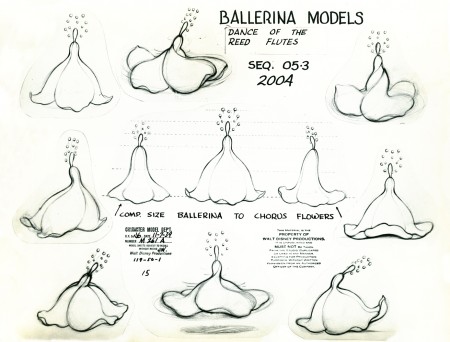 1
1(Click any image to enlarge.)
As this last model shows, the original plan for this sequence included a bug orchestra playing the score – whether part or all of it is questionable – there are a lot of models, drawings and watercolors left behind.
These can be found dominating the book that was released in 1940. There were books for each of the segments of Fantasia, and The Nutcracker Suite is one of them. Oddly, only few of the illustrations are frame grabs from the film, others feature fairies or few of the other characters who made the sequence. Most of the illustrations are these bug characters that don’t appear in the film.
So, to accompany the beautiful models above, I’ve decided to include the bug illustrations from this book – featured below.
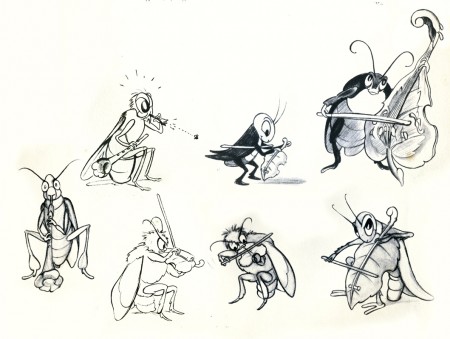 1B&W
1B&W
For more Fantasia items of interest, Bob Cowan is currently showcasing a number of his beautiful pieces on his website.
Articles on Animation &Disney 05 Sep 2009 07:41 am
Snow White at 50
- Last week I posted an article about women in animation which originally appeared in Sightlines Summer/Fall 1987 issue. I’d also mentioned that the very same issue had an article by John Canemaker about Snow White’s 50th Anniversary. Naturally, I have to post that article as well. It ties in with the recent issue of D23 wherein John has an article about Snow White celebrating a new remastering of the film and the ways it continues to inspire new animation artists. This is its 72nd anniversary.
Here’s the article:
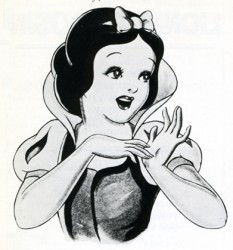 This year, Walt Disney’s first animated feature, SNOW WHITE AND THE SEVEN DWARFS, celebrates its golden anniversary with its re-release in some 2,000 theatres in North America and in venues in 60 countries overseas. The blitz of media events and publicity has encompassed proclamations, parades, and public appearances; soft-drink, clothing, and book tie-ins; a TV special; and, according to Jon Lang, Disney’s director of film licensing, “More merchandising for this movie than any other, including STAR WARS.” Even a Snow White rose has been created, with 100 bushes shipped to mayors in 40 major cities.
This year, Walt Disney’s first animated feature, SNOW WHITE AND THE SEVEN DWARFS, celebrates its golden anniversary with its re-release in some 2,000 theatres in North America and in venues in 60 countries overseas. The blitz of media events and publicity has encompassed proclamations, parades, and public appearances; soft-drink, clothing, and book tie-ins; a TV special; and, according to Jon Lang, Disney’s director of film licensing, “More merchandising for this movie than any other, including STAR WARS.” Even a Snow White rose has been created, with 100 bushes shipped to mayors in 40 major cities.
To date, the half-century-old SNOW WHITE has worldwide grosses totalling more than $330 million, making it one of the most popular motion pictures of all time and the movie that saved the Disney studio from financial disaster. “You should have heard the howls of warning when we started making a full-length cartoon,” recalled Walt Disney years later. Hollywood pundits called it “Disney’s Folly,” and predicted no one would sit through a seven-reel cartoon.
One of Disney’s reasons for producing SNOW WHITE as a full-length, animated cartoon was financial: The introduction of double-features during the 1930′s bumped Disney’s one-reelers—his cartoon “fillers”—off the screen. The other reason was an artistic one: A bold visionary and innovator, Walt Disney wanted to make full use of his staff’s extraordinary skills, which were developed during the making of his short films. Starting with Mickey Mouse’s debut in 1928, the Disney studio artists made remarkable and steady progress in expanding the stylistic and narrative parameters of the animated cartoon.
Disney’s introduction of certain technological elements-sound and color—forced animation to change. Soundtracks dimensionalized a character’s personality and toned down the over-exaggerated pantomime favored by the silent cartoons. In 1932′s FLOWERS AND TREES, one of Disney’s experimental Silly Symphonies (a series of shorts begun in 1929), Disney utilized a three-toned Technicolor process that allowed for a full range of hues. Old graphic formulas for characters and forces of nature were gradually redesigned to convey the illusion of reality and sincerity that Walt saw in his mind’s eye. The plots of the shorts came to be based on the personalities of the characters, rather than on mere action or gags. Thus, the emotional possibilities for animation were extended as never before.
Unprecedented Problems
The problems encountered in the making of SNOW WHITE were unprecedented. More than 750 artists worked on the film for three years, creating at least two million drawings (of which 250,000 made it into the film).
One of the most formidable problems was the animation of the human figures. The Princess, the Queen, the Prince, and the Huntsman had to be convincing for the melodrama to work. Indeed, the audience had to truly believe that two cartoon characters were going to murder another cartoon character. Previous unsuccessful attempts to portray human motion included the 1934 Silly Symphony, THE GODDESS OF SPRING. To overcome the drawing problems and stiff animation of that experiment, Disney established art classes on the studio lot. All staff artists were obliged to attend in order to study films frame-by-frame and to draw from a nude model. In addition, live models were filmed for the animators to study; interestingly, the model for Snow White was a young dancer who later became famous as Marge Champion.
The animation of the human characters works, for the most part, but is spotty. Snow White has a unique, sweet charm, but the poor Prince is never more than a cardboard symbol of a romantic hero. In contrast, the seven dwarfs are superbly realized. “These inspired gnomes,” wrote New York Times caricaturist Al Hirschfeld, “with their geometrical noses, flexible cheeks, linear mouths and eyes, highly stylized beards and costumes . . . lend themselves to articulation because of the tremendous magic of well-directed lines. But the characters Snow White, Prince Charming, and the Queen are badly drawn attempts at realism. … To imitate an animated photograph, except as satire, is in poor taste.”
For SNOW WHITE’S feature-length format, the violent, fast action and bright colors used in Disney’s earlier short films had to be softened and paced to sustain audience interest. Muted earth tones of green and brown predominate, and the extensive use of shadows enhances cool forest scenes, as well as bright meadows and moonlit castles. Snow White’s nightmarish escape through the forest is a scene full of rapid cuts and violent movement. It is followed by the sequence in which the forest animals discover Snow White, which is gentler and slower-paced than the one that precedes it.
The score, eight songs by Frank Churchill and Larry Morey (including “Whistle While You Work,” “Someday My Prince Will Come,” and “Heigh-Ho”), advances the plot and adds to our knowledge of the characters and their motivations, desires, and inner thoughts. The integration of songs with the plot precedes Broadway’s Oklahoma by six years.
Disney’s greatest personal input was in the development of the script and the personalities of the characters. The final scenario is admirably lean, clocking in at 83-action-packed minutes. While the story is succinctly told, it is also filled with details, the result of three years of intensive story conferences and ruthless storyboard critiques by Walt and his creative staff. Six months of work on the film was scrapped by Disney, and he ordered entire scenes redrawn. Three sequences in story-board or rough animation were cut from the film, not because they were bad, but because they impeded the flow of the story. At a recent press conference at the new Disney animation studio in Glendale, California, drawings and test footage from those “lost” sequences were shown. It was apparent that those sequences—which feature the dwarfs’ bed-building routine, soup-eating song, and a dream ballet with Snow White and the Prince—would have been as charming and entertaining as anything that remains in the film.
Disney’s perfectionism drove up the cost of the movie, produced during the Depression years of 1934-37, to astronomical heights, from an initial $150,000 to $1.5 million. “As the budget climbed higher and higher,” said Walt, “I began to have some doubts, too, wondering if we could ever get our investment back.” There was a cliff-hanging deal with a bank to borrow more money; but as the world knows, SNOW WHITE finally proved a great success. The film made its world premiere on December 21, 1937, and reviews were glowing. SNOW WHITE initially earned $8.5 million at the box-office, an enormous sum for the time, especially since children’s movie tickets cost 10 cents.
Feminist Reassessment
Although SNOW WHITE is undeniably a masterpiece of American cinema and a classic of character animation technique, the film has recently become the focus of feminist reassessment and anger. Feminists argue that Snow White is a symbol of female passivity, as she waits to be rescued by an active male, who will give her life purpose and meaning. Film historian Sally Fiske suggests that in order to “comprehend the statement SNOW WHITE makes, imagine reversing it. Try to imagine that the dwarfs were seven little women and the title character was a young prince. The story becomes utterly inconceivable—which is a very telling comment about how we perceive women.”
Charles Solomon, writing in The Los Angeles Times about this subject, interviewed Karen Rowe, an associate professor of English at UCLA specializing in fairy tales and folklore. “While children need a sense that a young figure can confront problems and surmount them, heroes tend to overcome problems in more active ways,” claims Rowe. “What I think is problematic for the 20th century reader of popular tales-including the Disney versions— is that no provision is made for activity on the part of the heroine. It’s all rescue, all passivity. What that communicates to a female child is that it’s never by your own will or action that you overcome a problem. It’s through intervention on your behalf by some other figure. That undercuts any sense of growth and leads to a cultural emphasis on female dependency, which I think is very destructive.”
When SNOW WHITE AND THE SEVEN DWARFS was made in the 1930′s, issues concerning women’s rights, feminism, and role models were not part of the social consciousness of the time. Our approach to viewing SNOW WHITE today should be the same as the one we bring to viewing other film classics, such as THE BIRTH OF A NATION, whose ideology is out of step with current important social issues. Parents should discuss such anachronistic screen images with their children, placing the characters within the context of the period in which they were created and supplementing them with alternative stories and female characters who are, as Professor Rowe says, “more affirmative of a young girl’s ability to act.”
John Canemaker, a contributing editor to Sightlines, ;s the author of Winsor McCay—His Life and Art, recently published by Abbeville Press.
If you want to see more pictures from Snow White, I posted a bunch of model sheets last Monday. Go here.
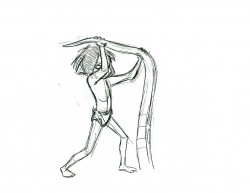
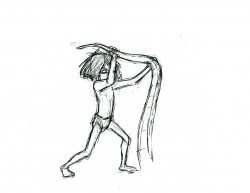
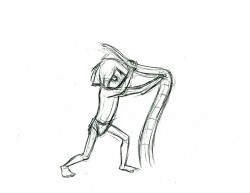
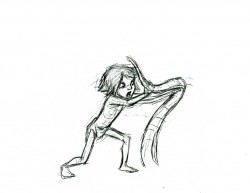
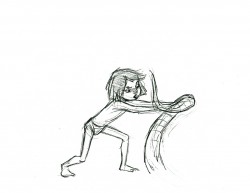
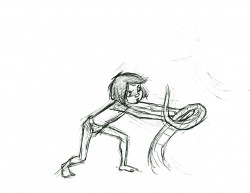
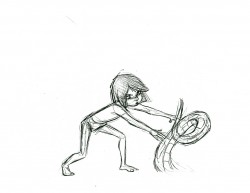
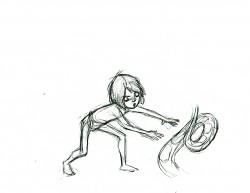
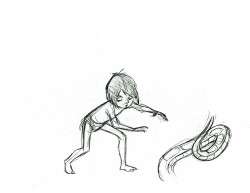
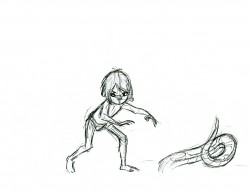
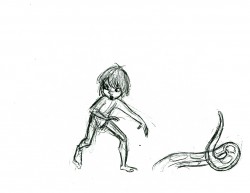
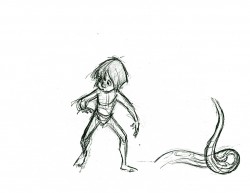
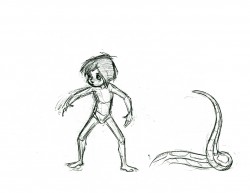
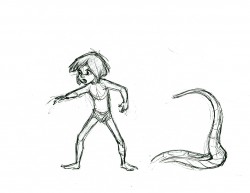
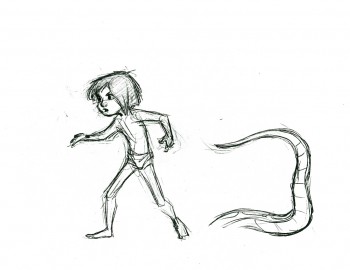
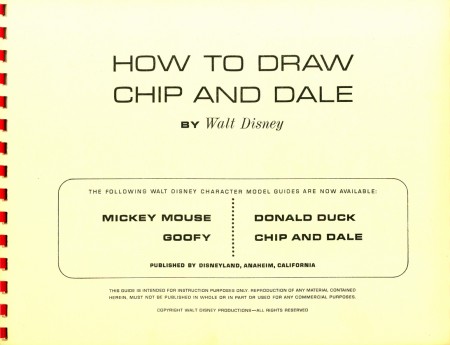
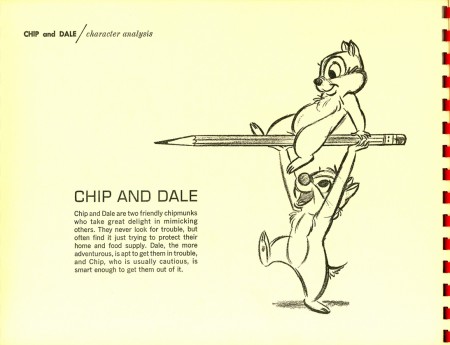
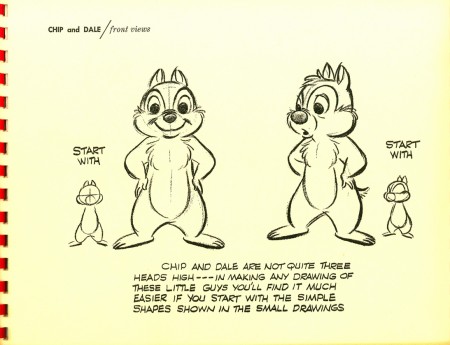
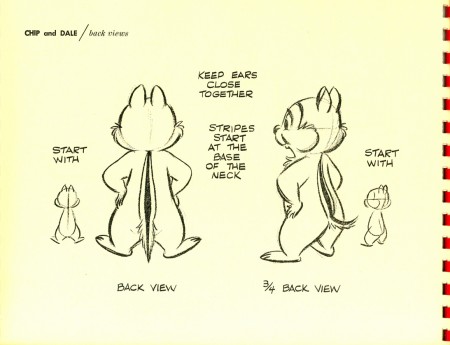
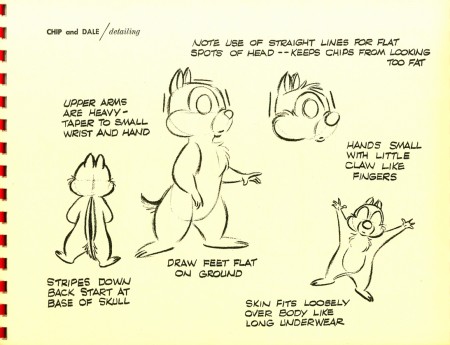
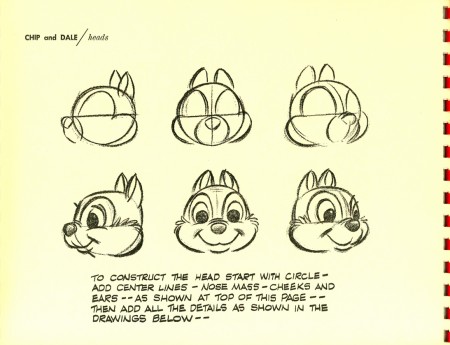
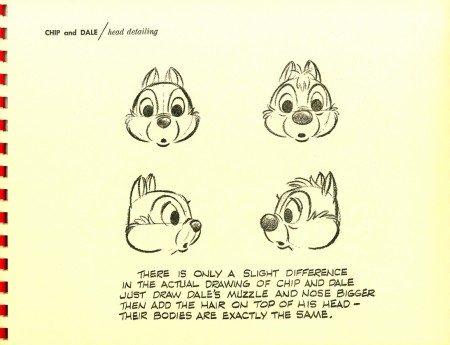
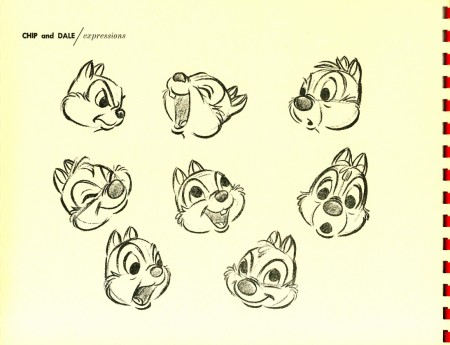
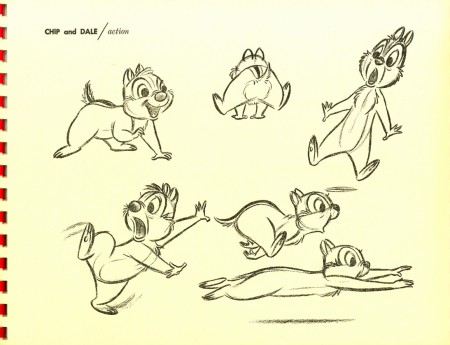
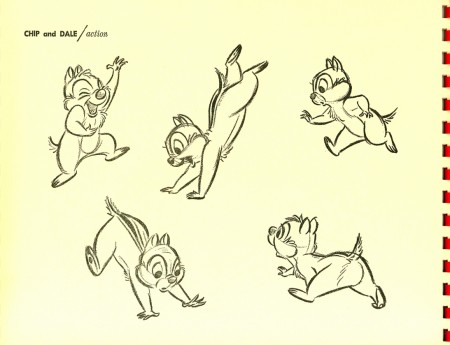
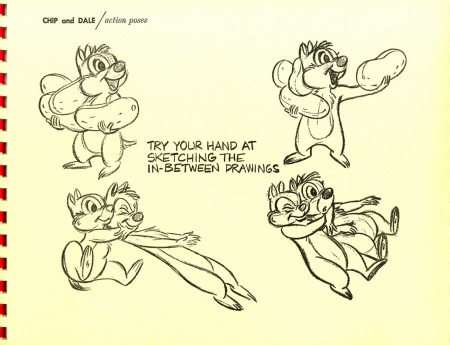
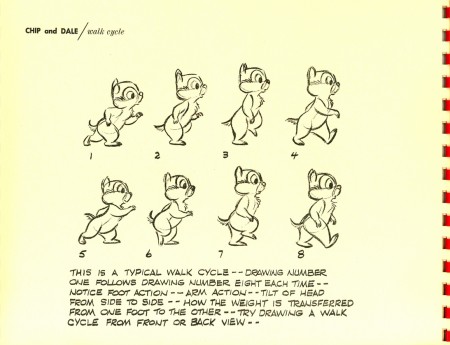
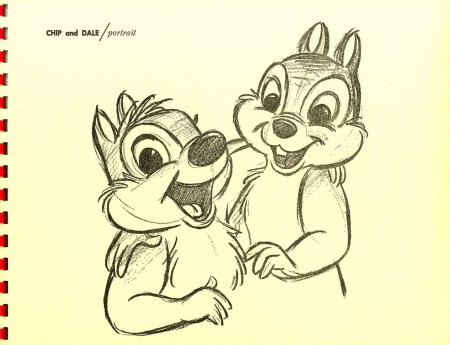
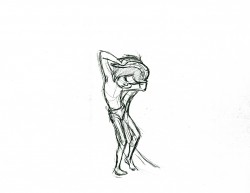
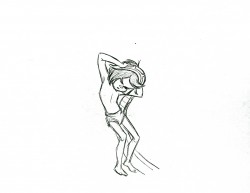
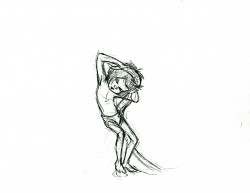
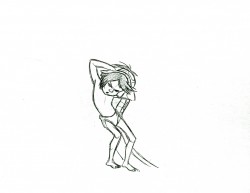
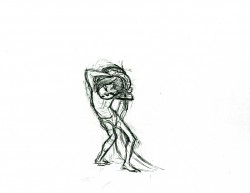
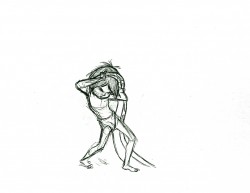
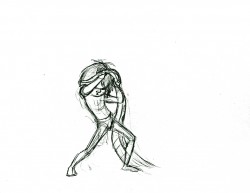
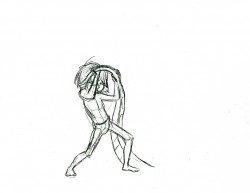
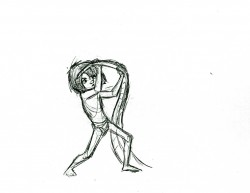
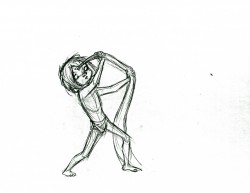
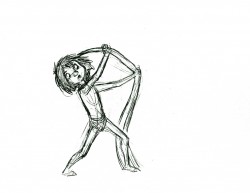
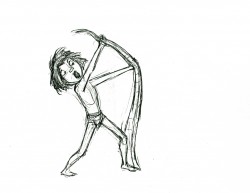
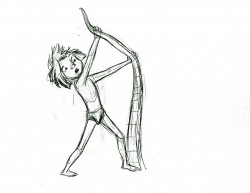
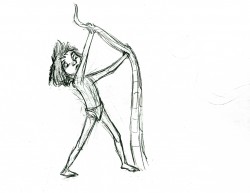
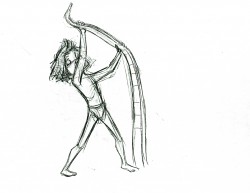
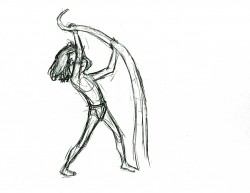
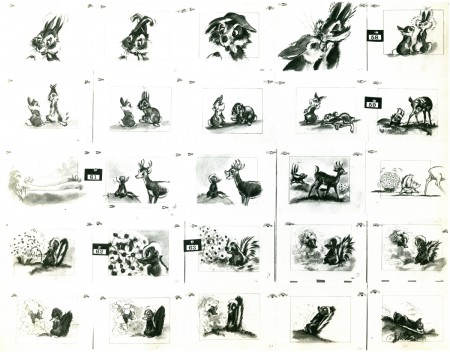
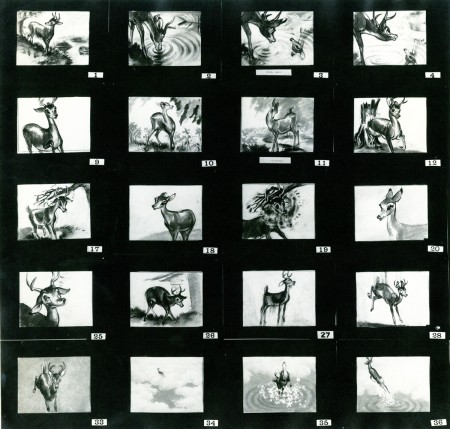














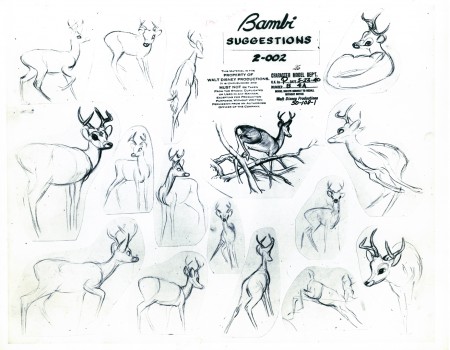
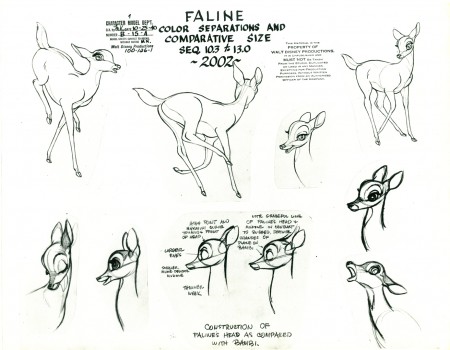
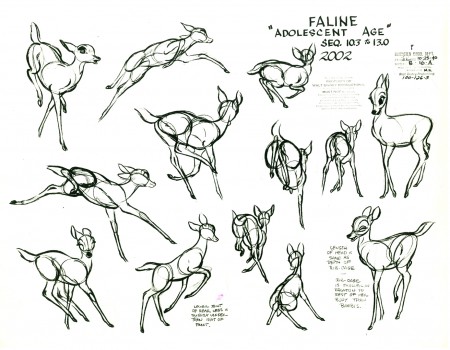
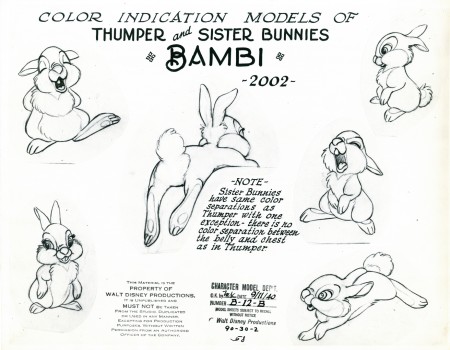
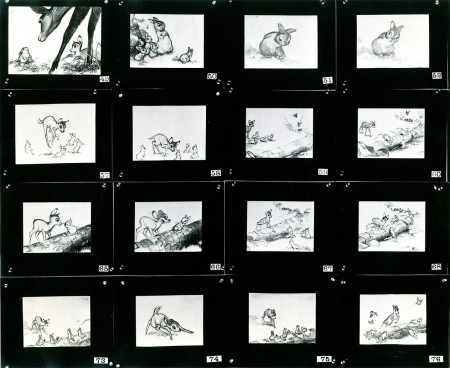
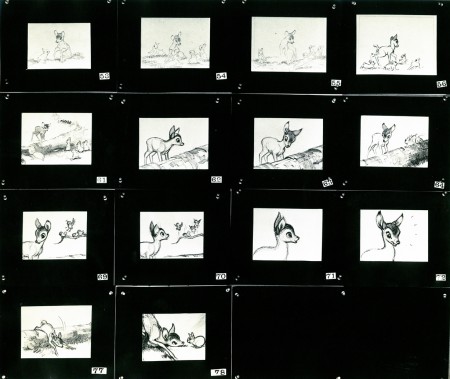










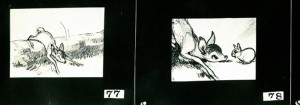
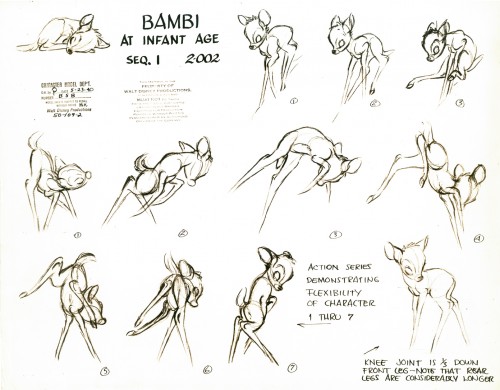 2
2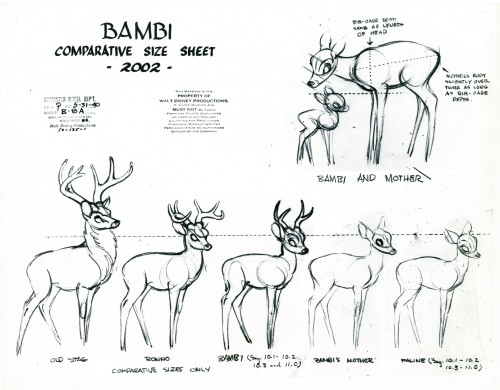 3
3